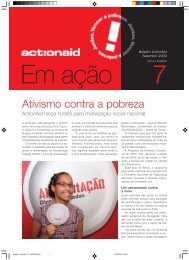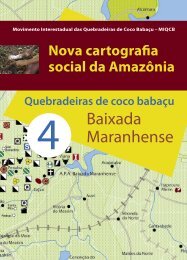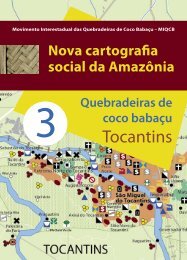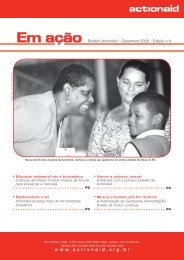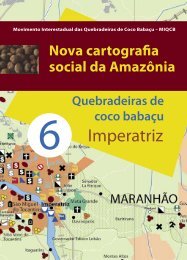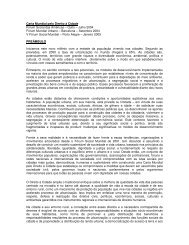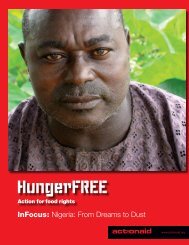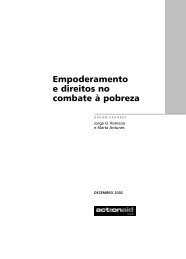InFocus: Uganda: Forced Child Marriage
InFocus: Uganda: Forced Child Marriage
InFocus: Uganda: Forced Child Marriage
You also want an ePaper? Increase the reach of your titles
YUMPU automatically turns print PDFs into web optimized ePapers that Google loves.
<strong>InFocus</strong>: <strong>Uganda</strong>: <strong>Forced</strong> <strong>Child</strong> <strong>Marriage</strong>www.actionaid.org
When PovertyForces <strong>Child</strong><strong>Marriage</strong>Poverty is forcing <strong>Uganda</strong>n parents to marry offyoung daughters for a bride price - usually five cowsor US$600.Grace Aseku, 19, from eastern <strong>Uganda</strong> was marriedoff by her parents when she was 14 to Ijoot Julius,16. Five years later, the couple has four hungrychildren.“None of my children have tasted milk since theystopped breastfeeding,” says Grace from the smallvillage of Nyakoi. “After weaning, I resorted to givingthem porridge made of sorghum, which is oftenhard to get.” Occasionally she manages to find alittle cassava or picks greens from the bush.The family survives by farming a quarter of an acre,providing enough food for a few months a year.Her husband sometimes earns extra cash orfood by working for one of the handful of betterofffarmers in neighbouring villages but Gracecomplains he often wastes the money on alcohol.Grace’s plight is common. Young girls, not yet readyto handle the responsibilities of married life, becomevictims of domestic violence, often giving birth topremature children. They are routinely exposed toHIV/AIDS and other sexually transmitted diseases.Treated as men’s property, they suffer separation,divorce or abandonment.If they are thrown out by their husbands and remarry– often as a second or third wife - they areeven more vulnerable to HIV/AIDS infection anddomestic violence. Sometimes they return totheir parents for support, completing the cycle ofdeprivation.Shortage of land and the lack of alternative jobs lieat the heart of the problem.“We simply cannot grow enough food,” says DinnahLoy Atekit, a widow who finds it increasingly difficultto feed her family of ten.As in many other parts of sub-Saharan Africa,women are responsible for growing most of thefood eaten in the home. In Nyakoi, they supplementPhoto: Orphans and malnourished children being fed porridge under the supplementary feeding initiative byOSEPA (to which Grace belongs) Photograph by: ActionAid <strong>Uganda</strong>1
what they grow by workingon the hospital farm, fivekilometres away, wherethey are paid less than adollar a day.Sometimes they collectcassava and potato tubersleft in the ground afterharvesting and take themhome for their families.Others walk six kilometres a day to Kumi town insearch of jobs, such as cleaning and digging roads.These jobs also pay less than a dollar a day.Some women go even further afield. Together withyoung men, they clamber aboard vehicles ferryingcheap labour to neighbouring districts. They workon large farms but their employers often fail to paythem and many are left to find their own way home.“There are cases of people who have disappearedwithout trace,” says Veronica Akello, chair ofActionAid’s partner organisation working in the area.“Some are lured by the food and stay, even thoughthey are not paid, rather than go home hungry.”Hunger has knock-on effects on the wholecommunity.“Many of our children, especially those who spendthe night hungry, abandon school and can be seenevery morning struggling with others to boardlorries, to go looking for food or paid labour,” addedAkello.But it is women, particularly the old and weak, whobear the brunt, as they cannot struggle with the restto climb into the trucks or walk long distances insearch of jobs. Husbands stop their child mothersleaving the compounds, so the wives find it hard tofeed their families.That’s why Grace and her children, and others intheir situation, often feel helpless. They are at themercy of men, who when they get paid, have thepower to decide when and whether to buy food forthe home.For Grace, at least, there is hope. She has nowjoined the ActionAid-supported women’s group inher village.“Many of our children,especially those whospend the night hungry,abandon school and canbe seen every morning...looking for food or paidlabour”Hunger in <strong>Uganda</strong>:Over 80% of <strong>Uganda</strong>ns live in ruralareas and survive off subsistencefarming for their food, depending onown-farm production or buying fromlocal markets.Most food is produced by womenbut agricultural productivity isdeclining due to inadequate accessand control over resources, likeland and seeds. This partly accounts for persistenthunger and malnutrition, especially in north andeastern <strong>Uganda</strong>.According to FAO statistics in 2004, 19% of<strong>Uganda</strong>ns were undernourished, an increase from17.9% of the benchmark period of the World FoodSummit and the Millennium Development Goals. Interms of food security, 5% of rural <strong>Uganda</strong>ns arefood insecure and 31% are highly vulnerable to foodinsufficiency.ActionAid’s HungerFREE campaign in<strong>Uganda</strong> calls for:• A food and nutrition act, recognizing people'sright to adequate food• Legislation on bio-safety and plant varieties toprotect indigenous seeds• A comprehensive seed policy giving smallholdersthe right to save, store, exchange and replant seeds• Government action to ensure people, especiallywomen, have access to and control of land andother resources• Regulations and controls to ensure corporationsrespect farmers' right to food.Cover Photo: Members of Osera Women’s Effort toFight AIDS (OWESA) REFLECT circle working onthe construction of a building to host their centre.Grace with her child in the front passing over bricksphotograph by: ActionAid <strong>Uganda</strong>For more information and high-resolution copiesof photographs, please contact Alexandre Polack:alexandre.polack@actionaid.org.2



